Crate made from steel angle sections on a 20' flatrack
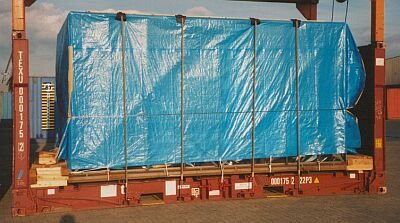 |
|
| Inadequate transverse securing of a steel crate |
Here too, transverse securing is provided solely by tie-down lashings. A negative feature is once again the nonuniformity of the 16 mm thick steel cable lashings. Another unfavorable feature is that all the turnbuckles are located on one side. One positive feature is the use of automobile tire segments as edge protection and to provide additional elasticity.
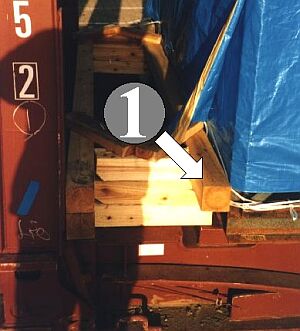 |
Left and below: lengthwise bracing in need of improvement |
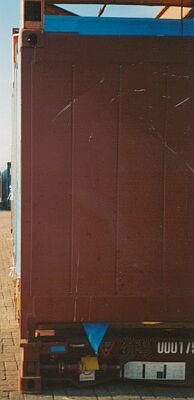 |
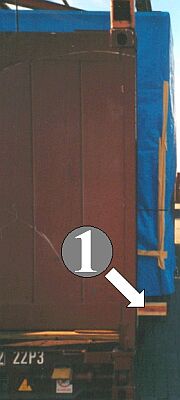 |
The lengthwise securing made from squared lumber is not as good as it could be. The wooden members are not applied against the parts with the best loading capacities, which in this case would be right at the bottom, where the crate of steel profiles is at its strongest. The unilaterally overhanging stowage arrangement adopted is cost-effective, as it allows one less slot to be used.
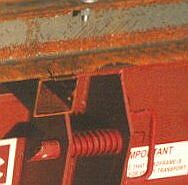 |
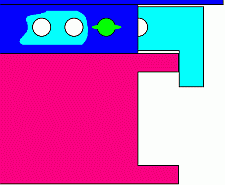 |
|
| Transverse securing option provided on crate | ||
Since steel profile crates are regularly used for carriage, a transverse securing option could be provided on the structure by the manufacturer. The bottom cross members of the crate often consist of rectangular tubing. These could be prepared in such a way that telescopic tubes with welded-on angles can be inserted and secured with pins, such that the angles grip with a tight fit over the outer edges of the flatrack. With such crates, only means providing lengthwise securing and securing against tipping have to be fitted, which is cheap to achieve.